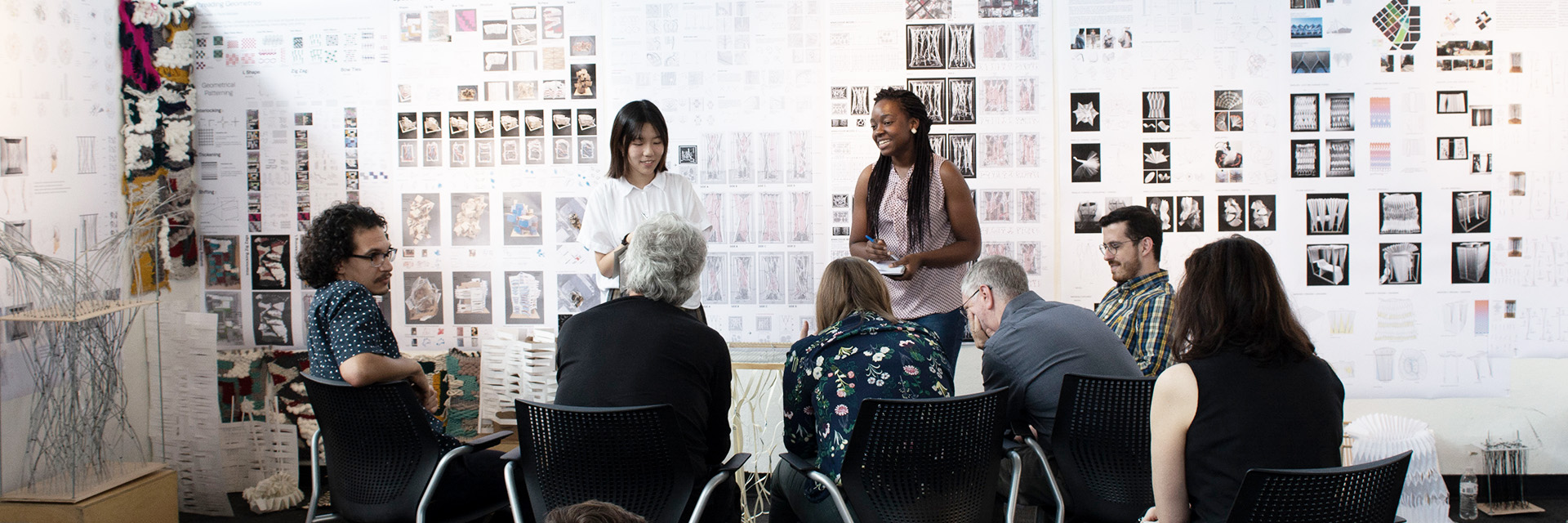TEXTILE TECTONICS STUDIOS
DEEP DECORATION
GaTech Fall’20-22

Textile Tectonics Studio is an innovative second-year architectural design studio that emphasizes a research-driven approach to architecture. The course is centered on the theme of architectural figuration and configuration, drawing from the intricate Celtic knotwork found in ancient illuminated manuscripts. Through the study and application of textile techniques, students will learn how to transform delicate patterns and interlacings into rigid, self-supporting structures that retain elements of textile art, including pattern, color, and complexity.
The studio’s structure is methodically segmented into four progressive phases: “Patterning,” “Transforming,” “Programming,” and “Producing.” This pedagogical approach allows for an exploration of form, materiality, structure, and scale from the interiority of architectural design before considering external factors such as site and program. This inversion of conventional studio sequences offers students an early exposure to diverse design methodologies. Objectives of this studio include:
- Building on foundational design and modeling skills to incorporate a rigorous research component into the design process.
-
Fostering an understanding of historical design elements from a material and geometric standpoint, rather than purely linguistic or symbolic.
-
Introducing the analogue computing.
-
Developing analytical thinking skills communicated through diagramming and mapping.
-
Encouraging innovative thinking by applying traditional textile techniques to architectural tectonics.
-
Developing advanced competencies in modeling complex geometries and representing large-scale architectural works.
This studio is designed not just to advance students’ design skills, but also to integrate research directly into the creative process, challenging them to conceive architecture through the lens of materiality and form’s enduring impact.
I contributed to developing this studio as an online course and conducted it in online, hybrid, and in-person formats over the past three years. Alongside leading the studio with 10-15 students, I developed and conducted tutorials on Adobe Photoshop, Illustrator, InDesign, and Rhino, emphasizing efficient workflow integration among these programs in the design process. Additionally, I delivered lectures focusing on diagramming and the theories on architectural programming.


TEXTILE TECTONICS STUDIOS
WOOL THREAD MODELS
GaTech Fall’18-19
The theme of this Textile Tectonics Studio draws inspiration from the pioneering work of German architect Frei Otto, focusing on his innovative wool thread models. Students engage with material computing by experimenting with wool thread models vertically. They study the emergent properties as wool threads are submerged in water, triggering self-formation by interacting with the liquid medium. This process allows for an analysis of structural behavior, informing the material properties of self-formed architectural structures. The studio’s approach is methodical and rule-based, starting with the establishment of the structural framework prior to considering site-specific and programmatic forces, which are incorporated later, allowing for a responsive reconfiguration of the initial structure. This progression reinforces a procedural design pedagogy that integrates empirical research into the creative process. Objectives of this studio include:
This studio challenges students to rethink traditional architectural design through the lens of material behavior and analogue computational methods, equipping them with the skills to push the boundaries of structure and ornament.
Alongside leading the studio with 13 students, I developed and conducted tutorials on Adobe Photoshop, Illustrator, InDesign, and Rhino, emphasizing efficient workflow integration among these programs in the design process. Additionally, I delivered lectures focusing on diagramming and the theories on architectural programming.
- Enhancing design and modeling skills with an in-depth research methodology.
-
Introducing concepts of material and analogue computing within an architectural context.
-
Developing analytical skills through diagramming and mapping structural behavior.
-
Fostering innovative design exploration using material diagrams.
-
Cultivating advanced skills in modeling complex geometries and articulating large-scale projects.
This studio challenges students to rethink traditional architectural design through the lens of material behavior and analogue computational methods, equipping them with the skills to push the boundaries of structure and ornament.
Alongside leading the studio with 13 students, I developed and conducted tutorials on Adobe Photoshop, Illustrator, InDesign, and Rhino, emphasizing efficient workflow integration among these programs in the design process. Additionally, I delivered lectures focusing on diagramming and the theories on architectural programming.
